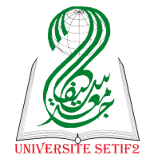| Titre : |
Second language acquisition |
| Type de document : |
texte imprimÃĐ |
| Auteurs : |
Slabakova,Roumyana |
| Editeur : |
Oxford : Oxford university press |
| AnnÃĐe de publication : |
2016 |
| Importance : |
483P. |
| PrÃĐsentation : |
ill.en col. |
| Format : |
25cm. |
| ISBN/ISSN/EAN : |
978-0-19-968726-8 |
| Langues : |
Anglais (eng) Langues originales : Anglais (eng) |
| Mots-clÃĐs : |
language acquisition |
| RÃĐsumÃĐ : |
This textbook approaches second language acquisition from the perspective of generative linguistics. Roumyana Slabakova reviews and discusses paradigms and findings from the last thirty years of research in the field, focussing in particular on how the second or additional language is represented in the mind and how it is used in communication. The adoption and analysis of a specific model of acquisition, the Bottleneck Hypothesis, provides a unifying perspective. The book assumes some non-technical knowledge of linguistics, but important concepts are clearly introduced and defined throughout, making it a valuable resource not only for undergraduate and graduate students of linguistics, but also for researchers in cognitive science and language teachers. |
Second language acquisition [texte imprimÃĐ] / Slabakova,Roumyana . - Oxford : Oxford university press, 2016 . - 483P. : ill.en col. ; 25cm. ISBN : 978-0-19-968726-8 Langues : Anglais ( eng) Langues originales : Anglais ( eng)
| Mots-clÃĐs : |
language acquisition |
| RÃĐsumÃĐ : |
This textbook approaches second language acquisition from the perspective of generative linguistics. Roumyana Slabakova reviews and discusses paradigms and findings from the last thirty years of research in the field, focussing in particular on how the second or additional language is represented in the mind and how it is used in communication. The adoption and analysis of a specific model of acquisition, the Bottleneck Hypothesis, provides a unifying perspective. The book assumes some non-technical knowledge of linguistics, but important concepts are clearly introduced and defined throughout, making it a valuable resource not only for undergraduate and graduate students of linguistics, but also for researchers in cognitive science and language teachers. |
|  |
 Accueil
Accueil


 Affiner la recherche
Affiner la recherche


